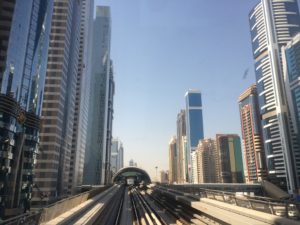
It’s been quite some time since we last shared with our readers what we have been reading, and we’ve even heard that this irregular feature has been missed!
So, without further ado, here’s what has caught our attention over the past few weeks:
The Wall Street Journal published an interesting piece by Adam Mann titled “Who’s In Charge of Outer Space?” The essay explores the latest debate on whether the international legal regime that underpins outer space governance (such as it is) needs to be updated. Writes Mann:
The limitless expanse around us has been a peaceful arena for the past 50 years, but the complex relationships between major space-faring powers like Russia, China and the U.S. are unlikely to remain Earthbound. A lunar land grab could make the dispute over man-made islands in the South China Sea look simple. “Nobody’s going to behave better in outer space than they do here,” says Laura Montgomery, a former FAA attorney who now has her own private practice in space law and policy. “But it’s easier to have lawyers argue about it than to have a shootout at the O.K. Corral.”
Along a similar theme, the U.S. Senate’s Commerce, Science and Transportation Committee held a hearing on May 23, 2017, examining the question of whether the 1967 Outer Space Teeaty needs to be updated in light of the growing commercialisation of space activities. One of the witnesses that testified, Peter Marquez, is a friend of SpaceWatch Middle East, and told Senators:
Perhaps the most crucial dimension of the Outer Space Treaty for our company is the Treaty’s enabling framework for space resource utilization. At this moment in time, as Planetary Resources brings utilization of asteroid resources ever closer to humanity’s reach, there are active discussions in the international community about how to interpret and apply the Outer Space Treaty to these historic activities. The United States comes to these negotiations from a position of strength. For one, the U.S. Government played a leading role in the Treaty’s formation. Yet it is the unbroken consistency of the United States’ interpretation of the Treaty, over fifty years and across the past twelve Presidential administrations, that is the key to our credibility in this process.
The rest of the witness testimony can be read here.
Australian publication The Conversation published a very engaging piece about the role of the Moon as a gas station in any sustained manned missions to Mars. Gary Li, Danielle DeLatte, Jerome Gilleron, Therese Jones, and Samuel Wald argue that exploiting the Moon for its ice to be made into hydrogen-oxygen fuel “would let us triple the payload delivery to Mars. At present, a human Mars mission is estimated to cost as much as US$100 billion, and will need hundreds of tons of cargo. Delivering more cargo from Earth to Mars with fewer rocket launches would save billions of dollars and years of time.”
In Aeon, Earle Kyle (one of the few African-Americans to be involved in the design and engineering of the Apollo programme) writes in response to criticism of Elon Musk’s plans to go to Mars. Kyle writes, “Yes, space costs a lot of money. But it does lead to great new technologies with wide-ranging potential. It’s an inspiration to that talented 5 per cent who will eventually help mankind grow up and walk among the stars. It’s also a lot cheaper than war.”
Entrepreneurism and innovation in the Middle East are close to our hearts here at SpaceWatch Middle East, so we were encouraged to read “These start-ups are changing the Arab world,” by Mirek Dusek and Khaled Kteily, both of the World Economic Forum. Dusek and Kteily write that among the many start-ups they have identified in the Middle East, an innovative culture that seeks to solve local problems is prevalent:
The start-ups also demonstrated incredible innovation in solving regional challenges. While some of their offerings are universally applicable, many close gaps specific to the Arab world. These include providing tele-health services in Arabic, providing better access to Arabic books and culture, curating Arabic news sources, using GPS to guide product deliveries, or facilitating hotel reservations by phone when many users are not comfortable paying with credit cards online.
Finally, in light of the recent Belt and Road Summit held in Beijing, the New Silk Road has been on our minds – as readers shall discover in the coming month or so. Robert D. Kaplan, the noted American writer on geopolitics, has written a marvelous essay on the multiple bids to build infrastructure connectivity in and around Eurasia called “The Return of Marco Polo’s World and the U.S. Military Response,” for the Washington, DC, think-tank Center for a New American Security. Writes Kaplan:
As Europe disappears, Eurasia coheres. The supercontinent is becoming one fluid, comprehensible unit of trade and conflict, as the Westphalian system of states weakens and older, imperial legacies – Russian, Chinese, Iranian, Turkish – become paramount. Every crisis from Central Europe to the ethnic-Han Chinese heartland is now interlinked. There is one singular battlespace.
Until next time…
Original published at: https://spacewatch.global/2017/05/outer-space-treaty-marco-polos-world-reading/
 SpaceWatch.Global An independent perspective on space
SpaceWatch.Global An independent perspective on space

